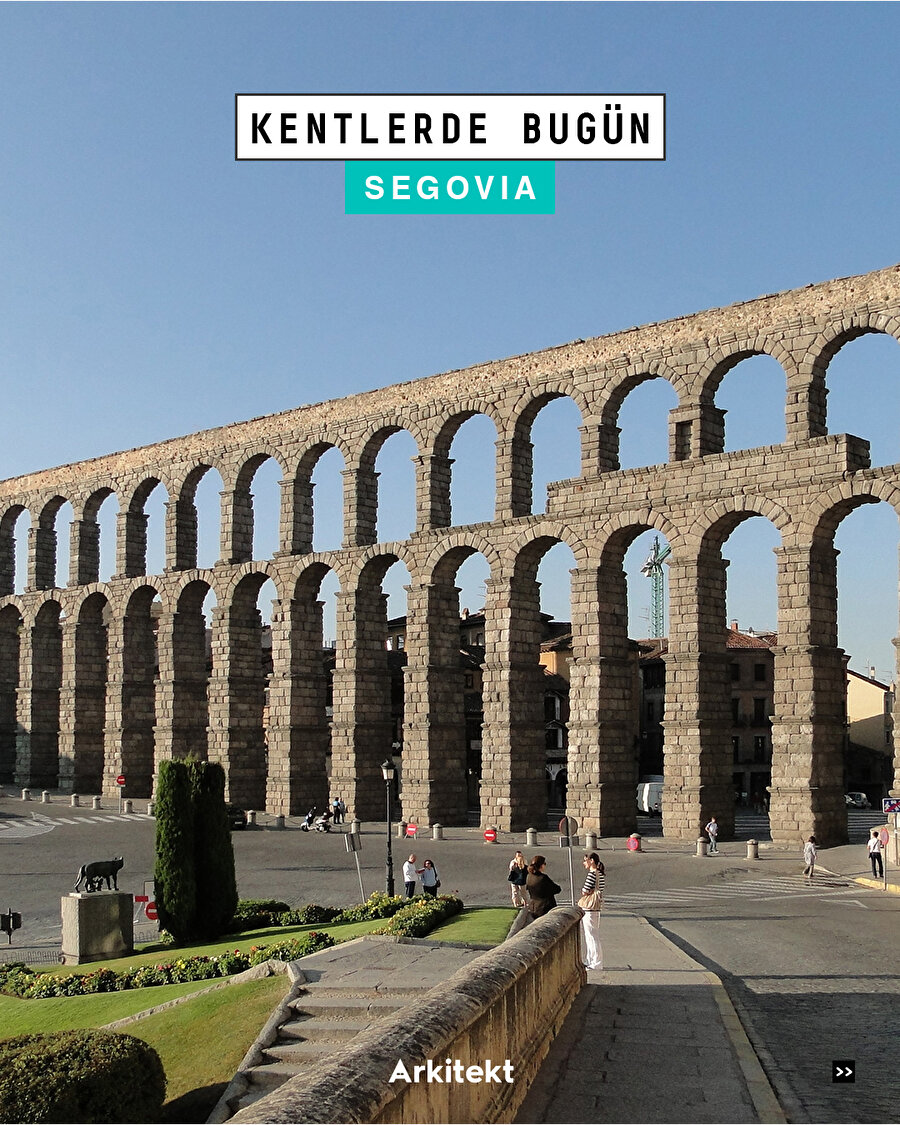UNESCO Mirası Segovia: Su Kemeri, Alcázar ve Katedral
16 AĞUSTOS 2025 , CUMARTESİ 18:00

Segovia, Kastilya ve Leon platosunun merkezinde, Roma mühendisliği ile Ortaçağ ve Rönesans mimarisinin üst üste çakıştığı özgün bir kentsel doku ortaya koyuyor. Kentin simgesi olan 1. yüzyıl tarihli Roma su kemeri, kesme taş blokların harçsız örgüsüyle antik mühendisliğin sürekliliğini günümüze taşıyor. Ortaçağ'da inşa edilen Alcázar, topografyaya hâkim konumu ve masif taş duvarlarıyla kale mimarisinin savunma odaklı karakterini yansıtıyor.
16. yüzyılda tamamlanan Segovia Katedrali ise geç dönem Gotik üslubun İspanya'daki en belirgin örneklerinden biri olarak kentsel siluette öne çıkıyor. Dar sokakları, taş konutları ve surlarıyla tarihi merkez, mekânsal sürekliliğin izlerini bugüne ulaştırıyor. Bu katmanlı yapı, Segovia'nın UNESCO Dünya Mirası Listesi'nde korunmasını anlamlı kılıyor.
__
Segovia, located in the heart of the Castile and Leon plateau, boasts a unique urban fabric where Roman engineering overlaps with medieval and Renaissance architecture. The city's iconic 1st-century Roman aqueduct, constructed from unmortared stone blocks, showcases the continuity of ancient engineering to the present day. The Alcázar, built in the Middle Ages, reflects the defensive character of castle architecture with its commanding topographical position and massive stone walls.
The Segovia Cathedral, completed in the 16th century, stands out in the urban skyline as one of the most prominent examples of late Gothic style in Spain. The historic centre, with its narrow streets, stone houses and walls, preserves the traces of spatial continuity to the present day. This layered structure makes Segovia's inclusion on the UNESCO World Heritage List meaningful.


